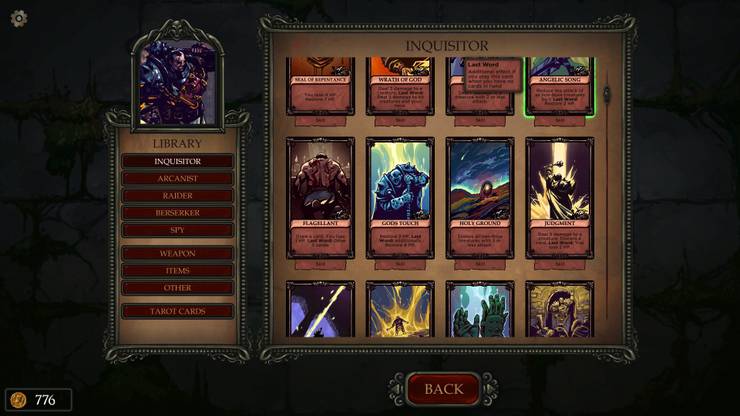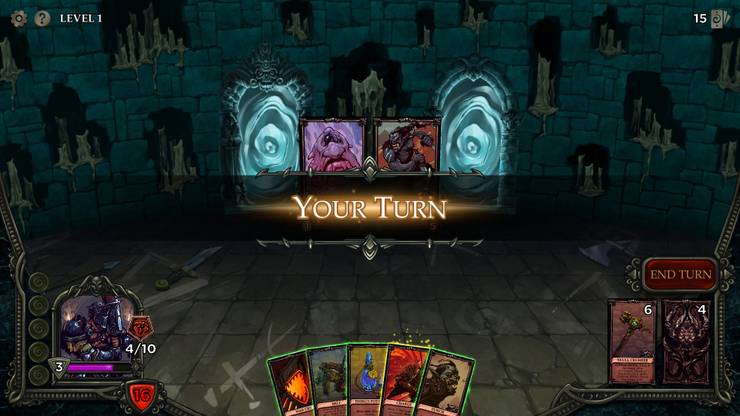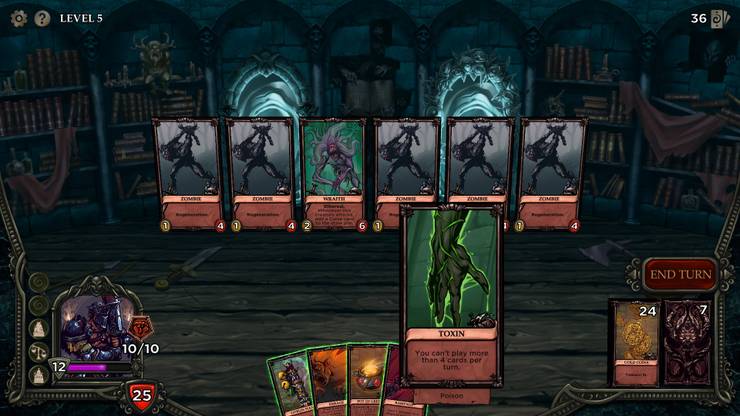Fate Hunters Review: A Fresh and Accessible Deck-Builder

Players who require a little more razzle dazzle to get fully immersed may find its lean set dressing somewhat underwhelming, but Fate Hunters definitely offers worthy experience in the genre for a bargain price.
We can thank the persistent appeal of card games like Magic: The Gathering, Hearthstone, and Slay the Spire for this recent glut of deck-builders popping up on various platforms and consoles. In terms of these three titles, the latter is probably the closest reference point and inspiration for Fate Hunters, a new indie deck-building roguelike on Steam which has recently come out of early access, and is worthy of greater attention. It’s a thoughtful and rewarding foray into the genre, prone to theory-crafting and a-ha moments on the way to producing effective decks, managing to retain some of the absorbing pick-up-and-play qualities of Slay but more meager in scope.
Unlike Slay, the overall emphasis on character texture is ratcheted down a few notches, with no player avatar ever presented, minimal animation throughout, and all games resolving within a more abstracted but readable display. Damage numbers and critical hits pop on the screen and enemies — always presented formally as cards with a static image and text — simply disappear when defeated. Players wander through a tower but there’s no actual map at all, with progression always presented as a choice between one or two doorway options to proceed further. In between battles you can possibly obtain new card drops as loot from completed encounters, activate any playable cards in your hand, as well as select a special skill card at any time when leveling up.
The first and only playable character available at the start is the Inquisitor, representative of a kind of paladin class whose pool of cards focuses on dealing damage and healing, which makes him an obviously strong ease-of-entry role. Successfully navigating through the tower to the endgame or activating certain cards or boons lets you accumulate a persistent currency between runs, which can then be spent on several new characters and special cards to add to their starter load-outs, potentially tipping the scales in your favor and fueling more successful runs down the line.

There are five primary floors of the tower to get through, with a special and harder bonus floor and boss eventually unlocked which leads to the true endgame. Past that, harder difficulty modes unlock per character, but that’s really the complete span of the game’s content.
Fate Hunters was in early access for a while (not to beat a dead horse but, yes, so was Slay the Spire), but the final version doesn’t exactly feel crammed with content. The five characters vary in terms of how interesting they are — the Spy character draws from any other characters’ cards, which adds a nice sense of chaos to their decks, but the Berzerker’s system of managing rage points is less creative in comparison — and there’s absolutely no story or flavor to the game world. Magic: The Gathering has always been more focused on lore, and Slay the Spire’s choose-your-own adventure encounters and character animations add such a recognizable and immersive texture to the game’s frequently brutal progress. Fate Hunters, on the other hand, outright tosses both of these qualities out, which results in it feeling more analytical and heartless…and, eventually, less memorable as a result. It’s a strong contender for that genre sometimes referred to as “podcast games,” being games that don’t require 100% of your attention, something to poke at while listening to a podcast in the background.

Every game doesn’t require some grand narrative or colorful (and costly) animation, but these might help grant Fate Hunters some greater weight and sense of purpose. Successfully completing or losing a run presents the same perfunctory result: a loss or win screen and a boot back to the character select, possibly with some garnered gold.
There are also some undeniably important routes to building a deck, which hampers creativity. Since there’s no energy or mana reserve system, cards in your hand can simply be played on the board when received, which means that cards that activate multiple draws feel more important than any other. The treasure system also plays into deck builds, because escaping the tower with currency requires you to retain certain mostly-unplayable treasure cards, which makes drawing through decks quickly within rounds even more critically necessary, otherwise leaving you staring at a fully unplayable hand. It’s a recognizable risk/reward mechanic, but it also feels limiting and disempowering. Enemies can also call tough reinforcements if they’re not disposed of quickly, so treasure-crammed decks that burn through turns can hopelessly extend matches.
Some truly OP cards popping up early in a run can carry dozens of encounters, something Fate Hunters seemingly tries to correct with special enemy abilities that test decks, especially the exile function. This mechanic deletes cards permanently, which is actually preferred at times, especially with the low-rent required trash each character starts the game with. However, specific enemies have the ability to exile your cards in a given turn, which can and will defang a curated deck if they are not dispatched or silenced quickly. In a sense, this means that the know-how to pivot deck builds on a dime is crucial, which might be one of Fate Hunters’ unique offerings to the genre, but it’s also less fun to feel suddenly roadblocked by the RNG in this way.

Even lacking any narrative text, the card art in the game is absolutely superb and deserves special mention, recalling the work of comics’ master craftsmen Mike Mignola and Eduardo Risso with a dark fantasy aesthetic; or, perhaps a more relevant reference would be the artwork in Darkest Dungeon and Deep Sky Derelicts. The backgrounds of the tower are less eye-catching, but you’ll also quickly recognize the preferred paths you’ll want to take simply by looking at the detailed doorways behind enemies, which is a nice touch.
Comparing Fate Hunters to other deckbuilders feels inescapable, but the game definitely does carry its own subtle and original mechanics, which will reveal themselves over time. This includes details like post-match play, where any cards in your hands can still be interacted with after an encounter — a loot bag card can be opened, or a heal spell or shield can be activated — and this aspect can factor into deck crafting as well. With more content, characters, and complexity added over time, this is a game that could successfully court Slay the Spire fans who want a similar but less-intense deck-building roguelike. Players who require a little more razzle dazzle to get fully immersed may find its lean set dressing somewhat underwhelming, but Fate Hunters definitely offers worthy experience in the genre for a bargain price.
Fate Hunters is available now on Steam for $14.99. A digital copy was provided to Screen Rant for purposes of review.
About The Author

















